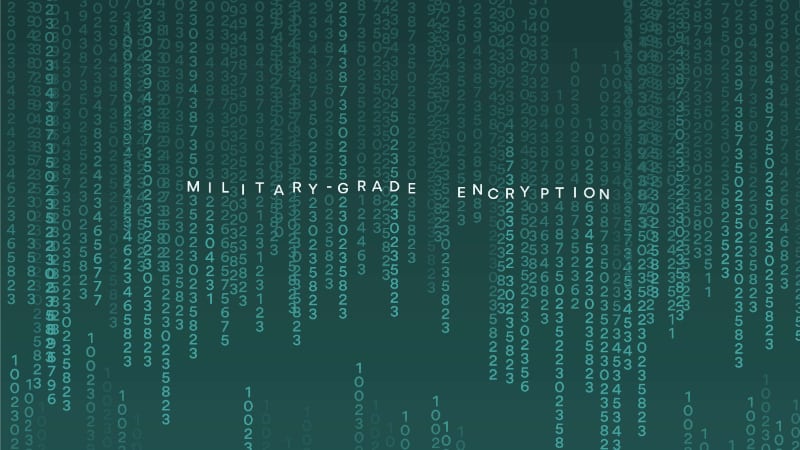In an age where digital security is paramount, the term “military-grade encryption” has become a buzzword, often tossed around in marketing materials and technical articles alike. But what does it truly signify? Is it merely a catchy phrase, or does it carry weight and meaning within the realm of cybersecurity? If we were to dissect this term, we might find ourselves grappling with elements of cryptographic techniques, government standards, and the nature of vulnerability itself.
To embark on this intriguing exploration, one must first contemplate: what exactly defines “military-grade”? The use of the adjective “military” implies a certain level of rigor, reliability, and trust that has been established over decades of securing sensitive information. Armed forces across the globe employ advanced cryptographic methods to protect communications and classified data, often rooted in a relentless quest for confidentiality, integrity, and availability—the three pillars of information security.
Did you know that military-grade encryption typically adheres to standards set by governmental entities, such as the National Institute of Standards and Technology (NIST) in the United States? This organization has developed a suite of cryptographic standards, including the Advanced Encryption Standard (AES), which serves as a cornerstone for military and civilian encryption applications alike. AES utilizes a symmetric key algorithm with key sizes of 128, 192, or 256 bits, providing robust protection against brute-force attacks.
But let us not become ensnared in the labyrinthine details of algorithms alone. Instead, consider the challenge of interpreting the security that “military-grade” purports to offer. While the standards may be upheld by the military and federal agencies, the private sector’s use of the term often lacks strict adherence to these protocols. Some companies market their products as “military-grade” without achieving the same rigorous compliance that the military demands, exploiting consumer trust for profit.
Moreover, the very idea of military-grade encryption invokes curiosity: does it render data invulnerable? Inherent within the framework of encryption is a paradox: the stronger the encryption, the more complex the key management becomes. Security professionals know that the strongest algorithm could still falter if the keys are poorly managed or exposed. Therefore, understanding that encryption is merely a part of a comprehensive security posture becomes pivotal.
Delving deeper, we must assess the actual implementations of military-grade encryption. Cryptographic systems employed by the military often include additional layers of security, such as multifactor authentication and meticulous auditing trails. This integration transforms plain encryption into a formidable adversary against cyber threats, ensuring that even if an encrypted communication is intercepted, deciphering it remains an uphill battle.
Intriguingly, as technologies evolve, so too does the landscape of threats. Quantum computing looms in the future, raising uncertainties about the longevity of current encryption methods. Will military-grade encryption standards withstand the onslaught of quantum decryption capabilities? To address these concerns, cryptographers are hard at work developing quantum-resistant algorithms. This continuous evolution in the field exemplifies the necessity of adapting to new challenges, a hallmark of military strategy itself.
Furthermore, the context of usage amplifies the importance of encryption. Consider a scenario wherein the encrypted data resides on a personal device versus a classified government server. The repercussions of a breach may differ vastly. In the hands of military personnel, sensitive information is not merely data—it can impact national security, the lives of individuals, and diplomatic relations. Such stakes elevate the requirement for encryption to not merely be strong, but also robustly implemented, monitored, and maintained.
On the lighter side, one may ponder whether everyday consumers should aspire to military-grade encryption for their own data security needs. While businesses and governmental institutions require heightened security levels, individuals can often implement sufficient protection through other means, such as strong passwords, two-factor authentication, and comprehensive cybersecurity practices. The key lies in recognizing one’s own risk profile and tailoring security measures accordingly.
Ultimately, the phrase “military-grade encryption” encapsulates both promise and peril. It conveys an assurance of formidable protection, yet it also invites skepticism surrounding its authenticity and implementation. As the world becomes ever more interconnected, the line between military and civilian encryption may blur; consequently, individual users must remain vigilant in their quest for digital security.
In conclusion, the quintessence of military-grade encryption transcends the mere strength of algorithms. It embodies a rigorous commitment to protecting sensitive data under the most adverse conditions, combined with a strategic approach to managing risk and vulnerability. The intricate dance between sophistication and security continues to unfold, posing a constant challenge for cryptographers and organizations alike. While the terminology may suggest invulnerability, the reality is that the pursuit of perfect encryption is ongoing—a journey rather than a destination in the ever-evolving battlefield of cybersecurity.








Leave a Comment